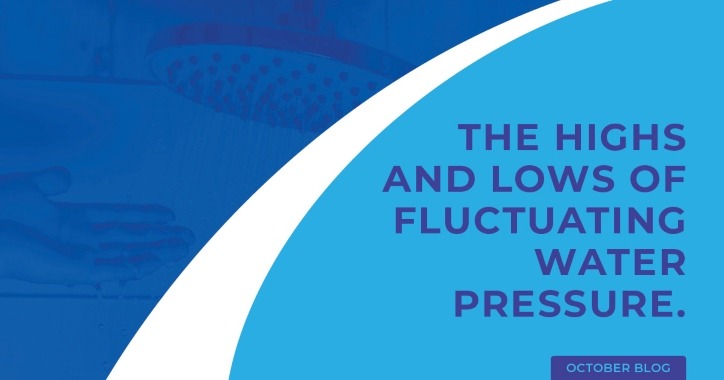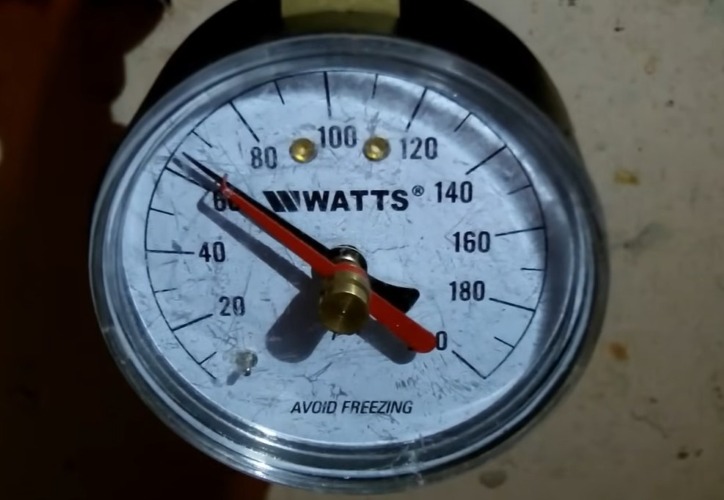
The highs and lows of fluctuating water pressure. Don’t let low water pressure get you down.
We’ve all been there. You turn the shower handle on only to be met with lower than expected water pressure. You have no choice and must make the best of it, so you take a shower that feels like it will take forever to get the soap out of your hair. If you have ever experienced low water pressure in your home and thought there was nothing you could do to fix it, you may want to think again. Continue reading to learn how water pressure works, how it affects your plumbing, and what you can do to fix it.
Water pressure versus volume- what’s the difference?
It is important to understand the difference between water pressure and water volume or flow. Most people think they are one in the same and use the term “pressure” when referencing both. Water pressure is actually regulated through valves that can increase or decrease the force that pushes water through the plumbing system to showers, faucets, and appliances. Corroded pipes and other issues like blockages can affect the volume of water that flows through a home, in addition to impacting the water pressure as well.

How does water pressure work?
Most municipal water mains are set well above 140 psi because it is the main source of water to multiple homes in an area. This is necessary so the pressure of the water can make its way without issue to the main water line in a home. Most homes have a pressure reducing valve (PRV) installed near the main water shut-off valve that regulates the incoming water pressure and ensures it is at a safe level for a home. Water pressure in a home typically ranges from 45 psi – 80 psi.
What exactly affects low water pressure in house?
- There are a few factors that can impact low or high water pressure experienced in a home including:
- Pressure Regulating Valve for water (PRV) Failure: the PRV is a mechanical device that can malfunction or fail over time. If this happens, the regulator will stop working and as a result, residents will experience either an increase or decrease in the home’s water pressure.
- Elevation of Source: city water is distributed from a water treatment plant to pressure tanks located throughout the area. Some municipalities have water towers that also distribute water to main water lines. The higher the elevation of the tank, the higher the pressure will be. The same applies to homes at a higher or lower elevation than the water supply. This is gravity at its finest.
- Water Valves: if the home’s shut-off valve isn’t fully open, this could impact water pressure as well as volume.
- Leaky or Corroded Pipes: if a home has old pipes, it is possible that the pipes are corroded which will naturally cause the pressure and volume to decrease. Many older homes also have narrow pipes which can also affect both the pressure and the volume or the flow of the water. If there is a leak in the pipes, this can impact the pressure as well.
- Blockages: similar to corroded pipes, blockages can also decrease the home’s water pressure and volume or flow.
- Faulty Fixtures: if a home’s fixtures like the faucet, shower head, bathtub, toilet, etc. are experiencing low water pressure, it is possible that the fixture is to blame. Faulty fixtures can cause the water pressure to decrease and potentially damage the source pipes in the process due to pressure buildup.

How does water pressure affect plumbing?
While low water pressure is an inconvenience, high water pressure can cause damage to the home’s plumbing system. If this isn’t addressed or goes unnoticed, high water pressure can cause pipes to burst or leak, damage your appliances or seals, and cause noisy or rattling pipes. This may not seem like a major issue at first, but over time the damage can lead to costly repairs that may have been preventable to begin with.
How can you regulate the water pressure in your home?
If you are experiencing low or high water pressure, there are a few things you can inspect to diagnose the potential problem. This may or may not be something you can repair on your own if an issue is found, but at a minimum you have checked the most likely causes. Here are 5 things to inspect to self-diagnose the problem:
- Check the pressure reducing valve (PRV) to see if it is operating properly. One way to diagnose a faulty PRV is to install a pressure gauge on each side of the regulator and measure the incoming and outgoing water pressure from the home’s main water supply.
- Inspect all faucets and clean aerator screens to remove debris and other buildup that can affect the flow and output of the water.
- Look for leaky, corroded, or blocked pipes. If you have an older home with severe corrosion or leaks that are causing significant damage, you may need to consider repiping your home to prevent further damage from occurring.
- Check the main shut-off valve to verify that it is fully open. Semi closed valves can reduce the volume of water needed to move water through your pipes to the fixtures.
- Inspect your fixtures and replace them if necessary. If you have verified that none of the above issues are to blame, it may be time to replace your faucet, shower head, bathtub, or toilet. Start by replacing the fixture that is experiencing the lowest water pressure. After you have completed installing a new fixture, turn the water on to see if that increases the water pressure.
Overall, ensuring that your water pressure stays within the normal household range is not only essential for daily use in the home, monitoring the pressure will also help to prevent significant damage from occurring in the future. If you are noticing any issues with your water pressure and you would like a professional opinion, our plumbing specialists are here to help. Contact us here or give us a call today at (513) 999-6820 and get a free quote on any of our services. Blue Chip Plumbing provides 100% satisfaction guarantee.

